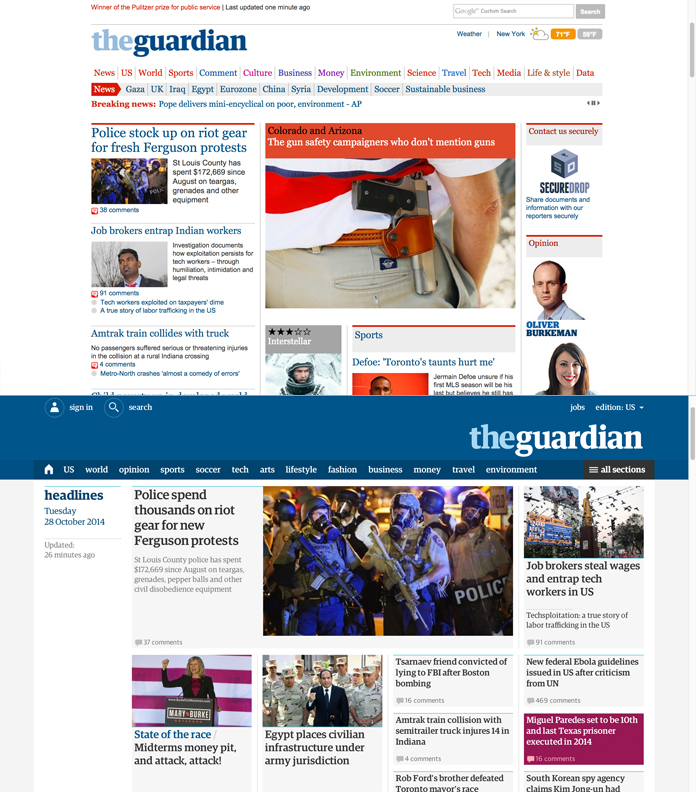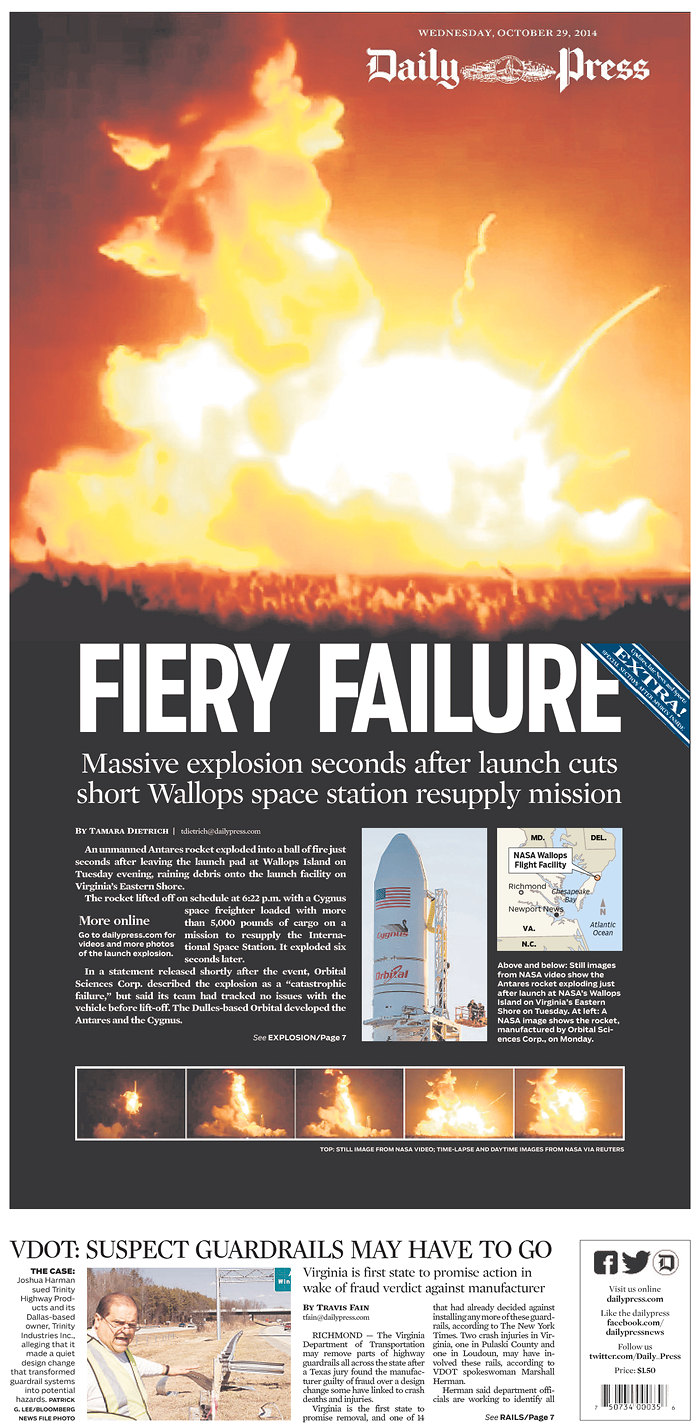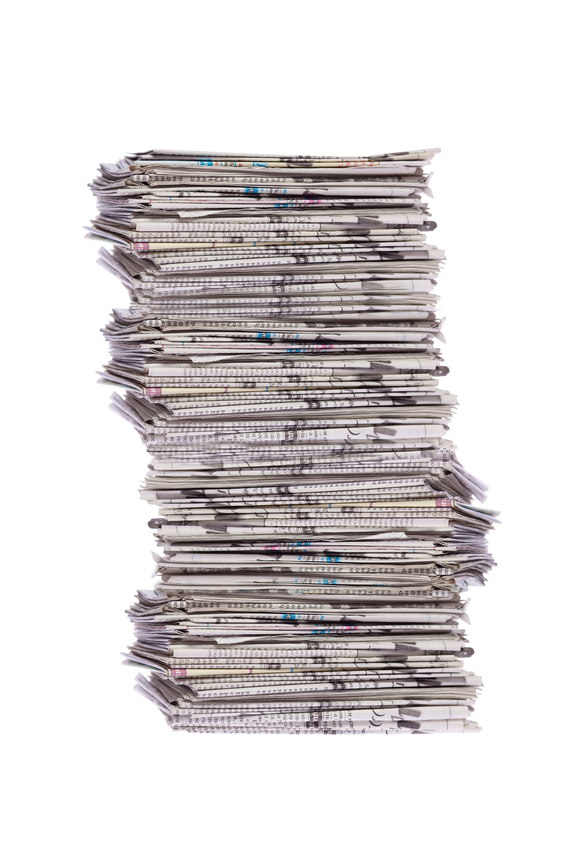Subscribers of The Hartford Courant will find their copies of Wednesday’s newspaper looks old. Really, really old. For the official anniversary of the 250-year-old newspaper, the Courant’s Wednesday edition comes wrapped in a copy of the original.

October 29th is the official anniversary of the 1764 printing of the once-weekly Connecticut Courant, but the newspaper started celebrations in January and will continue them throughout the year. Those celebrations include monthly themes and a reproduction of the original paper, but also a big digital push to share the Courant’s past and include readers in the conversation about what the Courant was, is and is becoming.
“I feel it’s almost an opportunity to reengage and relaunch everything we’ve done digitally,” said Nancy Meyer, the Courant’s publisher and CEO, in a phone interview. “It’s a celebration, certainly, of the history, but at the same point, where are we going? People have begun to understand the evolution of where we were.”
Like
Courant 250 is a marriage between old stories and new technology, Andrew Julien, editor of the Courant, said in a phone interview. Some of that means sharing photos, stories and pages from the archives, and some of it means gathering old stories online.
“When we began rolling out our 250th content in January, we started hearing from people in the community about how they used to be Courant carriers and what that meant to them,” said Christine Taylor, digital platform manager, in an email. “We realized the opportunity to engage with our audience and have them participate in the telling of our history. We used Facebook to solicit stories from our readers, and the response was tremendous.”
(function(d, s, id) { var js, fjs = d.getElementsByTagName(s)[0]; if (d.getElementById(id)) return; js = d.createElement(s); js.id = id; js.src = "//connect.facebook.net/en_US/all.js#xfbml=1"; fjs.parentNode.insertBefore(js, fjs); }(document, 'script', 'facebook-jssdk'));
“Between Facebook, email and phone calls,” Taylor said, “we heard from close to 200 former Courant Carriers.”
This story is from Richard Templeton:
When the Japanese surrendered it was called V-J Day and the Courant put out an extra edition to celebrate the day. My district manager called me to see if I would be willing to deliver the extra on Main Street in Middletown. I was only 11 years old, so I had to ask my mother for approval. She said OK, so I went to the Courant office to get the Extra paper. It was a wild scene on Main Street. People were singing and dancing in the street. I don’t remember how much the Courant was charging for the Extra — maybe a few cents or a nickel. But people were giving me a lot of quarters, halves and dollar bills. I was going up the street shouting “Extra, Extra, read all about it. Japan surrenders. The war is over. Get your Extra here.” It was late when I got home. My mother was not too happy with me. But when I put all the money on the table that I got for selling the Extra she kinda settled down.
‘Biased media’
The Courant, and really all American newspapers, have changed a lot recently, but the Courant changed dramatically since it began, too.
“When you look at the first century of the Courant’s history, the newspaper is very political,” Julien said. It made an enemy of Thomas Jefferson and later aligned with xenophobic groups opposing immigration. But by the late 1850s, the newspaper “became a strong voice for abolition and against slavery,” he said. “You really see the political tide of the nation ebbing and flowing in the Courant.”
News and opinions began dividing into their own sections, he said, and news became more obviously straightforward.
“When people accuse us of being biased media, you should look at the paper from 1832,” Julien said.
To celebrate the paper’s 250th anniversary, people from around the Courant have contributed and the newspaper partnered with local institutions, including the Connecticut Historical Society. Monthly themes have included weather, the arts, crime and sports.
A documentary about the newspaper’s photojournalists, produced with Connecticut Public Broadcasting, airs next month.
The Courant has also tried to reach people through public forums tied to the monthly themes, including conversations on race and inequality and recovery.
Next
In September, the Courant launched Courant.com on a new, fully-responsive platform.
Since then, “our Facebook referral traffic has increased 119 percent to our baseline. We think a lot of this comes from the addition of sharelines in our template, and our increasing understanding of what content is resonating with our audience on social platforms,” Taylor said.
The paper is thinking about what matters to readers, and as part of their big anniversary content, the Courant also looked to the future. Marie Shanahan, a former staffer and now an assistant journalism professor at the University of Connecticut, wrote about the new ways people are getting and gathering news.
Fears aside, journalism is headed into an exciting and complicated age when part of the job will be finding the right balance between innovation, ethics and economics.
Throughout the year, the Courant has tried to use its 250th as a way to reach new people through social media and in person, and to share the history the paper has been around to tell.
“It really has allowed us to remind ourselves and our readers that for 250 years, we’ve been the storytellers of Connecticut,” Julien said. “The platform is changing, but our role isn’t changing.” Read more







